Bridging the Sociocultural Gap: Three Lessons from The Power of Communication China Trip
Earlier this year I organized last month’s four-week China book tour for my mentor and boss, Helio Fred Garcia. The Chinese edition of his book, The Power of Communication: Skills to Build Trust, Inspire Loyalty, and Lead Effectively, and Logos Institute’s approach to leadership, communication, and crisis management, were well received and highly appreciated by Chinese readers and audiences.
We visited 15 prestigious universities and had many public events in four Chinese cities. Our audiences were from such disparate organizations as:
- Top Chinese universities such as Tsinghua University, Peking University, Communication University of China, Nankai University, Shanghai Jiaotong University and Shanghai International Studies University;
- Joint-venture universities such as New York University Shanghai, Johns Hopkins-Nanjing Center for Chinese and American Studies, and Sino-British College;
- 3) Large corporations like Vanke, the largest residential real estate developer in China, and
- 4) Renowned media organizations like Shanghai Daily.
We dealt with varied groups of people, from 20-something college students to 70-something millionaires; from public relations majors to MBAs, and EMBAs; from journalists to government officials; from crisis managers to bankers and engineers…
As a result of this exchange, Logos Institute is now in discussion with several top universities for longer-term academic collaboration, but that is not the most valuable result of the trip.
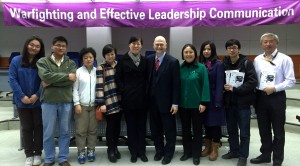
Right of Prof. Garcia, in green, Dr. Xiaojun Qian, Professor and Assistant Dean, School of Economics and Management, Tsinghua university; Left of Prof. Garcia, the publisher, Wendy Yang of Publishing House of Electronics Industry
We have built relationships with several institutions and companies for future cooperation, but again that is not the most valuable result.
Lessons Learned
As a communication practitioner, a tour observer and a translator, I discovered three lessons to be the most valuable outcome of the trip; lessons that can help us all to better understand, respect, and bridge the communication gap between different audiences.
We should understand, respect and bridge the gaps caused by:
- Different languages
- Different learning approaches
- Different cultural styles
These three lessons are universal and universally applicable.
Below I elaborate on the first lesson, different languages. In a subsequent post I will elaborate on each of the remaining two lessons.
Lesson 1: Different Languages
One obvious gap between the American author, Helio Fred Garcia, and the Chinese audience is language. We can easily overcome this obstacle by translation; translating both the slide content for visual reinforcement, and simultaneous or consecutive translation of the spoken word.
Some universities and organizations in Shanghai, and Johns Hopkins-Nanjing Center for Chinese and American Studies in Nanjing, did not require simultaneous or consecutive translation because most lecture attendants spoke fluent English.
But on most other occasions I translated the lecture, the Q&A session and even the meeting with deans, professors, or other leaders.
These two scenarios were easy to handle compared to the third scenario – The audience or the leader had the illusion that they were fluent in English, and then the misunderstanding came as expected.
This illusion of fluency has consequences, sometimes tragic, sometimes comical, but often just frustrating.
Throughout the trip, I discovered many of the challenges associated with the illusion of fluency. I offer just two representative examples:
1) “Publicity” or “Propaganda”?
Chinese is one of the three hardest-to-master languages in the world (The other two are Arabic and German).
One difficulty is its brevity. One Chinese character could easily have five or six meanings, so there could be various explanations for one Chinese word.
For instance, the Chinese word 宣传 (“Xuan Chuan”) can be accurately translated in English as both “propaganda” and “publicity.” In English the word “propaganda” is derogatory. But “publicity” is benign, if not commendatory. Because of this linguistic phenomenon, many Chinese cannot understand the subtle difference between publicity and propaganda. They interchangeably use them, just as Americans in a big city might interchangeably use “subway” and ”metro.”
To add to the confusion, there is a Chinese Central Government Department called the “Xuan Chuan Department.” Technically, it should be translated as “Department of Publicity.” However, because many Chinese conflate publicity and propaganda, they simply translate that department as “Department of Propaganda.” Many even prefer the word “propaganda” because, as one person confessed to me, it “looks premium and shows the translator’s profound English vocabulary.” This can create a deep sense of suspicion among native English speakers that “this Chinese Central Government Department does nothing else but propaganda.” Fortunately, the official name of this department is now “The Publicity Department.”
2) God uses [a] VPN (virtual private network)?
It is commonly acknowledged that many Chinese popular foods are hard to translate. CNN and HuffingtonPost featured some humorous accounts of this.
For example, “Fo Tiao Qiang” is a southern China dish or soup originating in the Qing Dynasty (1644-1912). It contains shark fin, quail eggs, bamboo shoots, scallops, sea cucumber, abalone, chicken, Jinhua ham, pork tendon, ginseng, mushrooms, and taro. The literal meaning of the name is “Buddha Jumps Over the Wall.” It is meant to suggest that the dish is so enticing that even Buddha would be unable to resist its lure, and would jump over the wall of his temple to be able to taste the soup.
But last month we saw the soup translated as “God uses VPN.” Some context: In China much of the internet is blocked behind a firewall. But Chinese people know how to access some of the forbidden parts — Google, Facebook, Twitter, etc.– simply by using a virtual private network (VPN) to get past the firewall. The same Chinese words lead to dramatically different English translations.
So, the delicious dish traditionally translated as “Buddha Jumps Over the Wall” on at least one menu is now rendered “God uses VPN.” How can we understand it without the context?
In my next post I’ll address the two remaining questions:
How to understand, respect and bridge the gaps caused by
- Different learning approaches
- Different cultural styles.


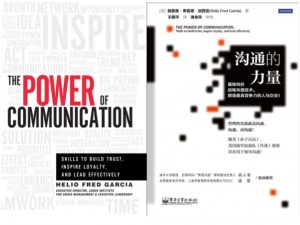
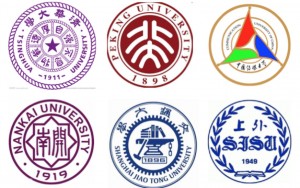



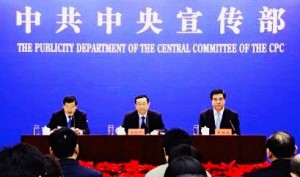
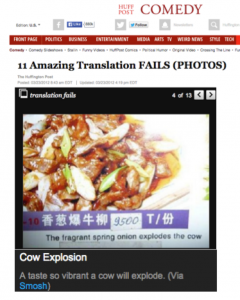
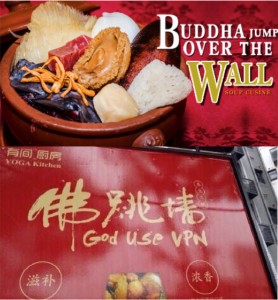

Leave a Reply
Want to join the discussion?Feel free to contribute!